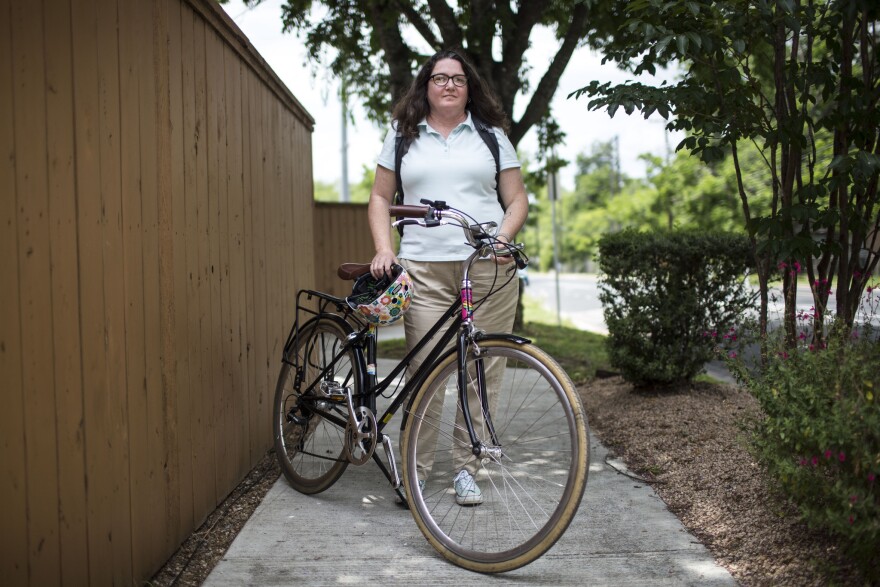It’s been a few years since East Austin resident Bonnie Hauser sold her car. The librarian's commute is short enough that she usually bikes or walks to work with the Austin Independent School District. When she has a meeting downtown, Hauser takes the No. 17 bus from her neighborhood.

“Right now, I have a five-minute walk from my house to this bus stop,” Hauser said, standing at a stop on Bolm Road.
But major changes are on the way for the region’s public transit system. Capital Metro says the plan known as Cap Remap, which launches June 3, will simplify the bus system while adding more frequent routes.
But for Hauser and some of her neighbors, it will mean walking about half a mile to a stop at Airport Boulevard and Shady Lane and then making a transfer before getting downtown, about four miles away.
One of the goals of Cap Remap is to route more buses onto major corridors and keep them from winding through small neighborhood streets. Hauser’s usual bus will be moved off Bolm and largely onto Cesar Chavez.
“I can understand wanting to do that, but the people who live in neighborhoods have to get to the buses somehow,” Hauser said. “And the thing is, they’ve just eliminated our neighborhood entirely, and there are a lot of people that are dependent on this line to get to work every day.”
At Hauser’s stop, a bright pink poster reads, “This stop will be closing June 3. Let us help you prepare.”

Hauser has been trying to do just that.
“We’ll have to work with it, for sure,” she said, “but I think if enough people who are being affected by it keep speaking out about it, they’ll see the need to restore service, at least to a certain degree, to neighborhoods that have been completely eliminated.”
Hauser’s neighbor, Jason Wright, works at a restaurant downtown and the bus is his main source of transportation. Wright said the changes will make his commute longer and that he’s reached out to Cap Metro five or six times to voice his disapproval.

“The whole thing doesn’t make sense,” Wright said. “I imagine [to] some big city planner guy ... this seems like a great idea. I want one of them, any one of them – just choose somebody at Capital Metro – to go to my doorstep, and then go ahead and go enjoy that walk over there in, say, mid-July.”
At a media roundtable last week, Cap Metro CEO Randy Clarke said these are the biggest changes ever made to the region’s bus system, affecting more than half of all routes.
“We want to get away from operating just as an individual route,” Clarke said, “and thinking about how all of our routes work together as a network.”
Cap Remap will bring 14 high-frequency routes to the system. They’ll run at least every 15 minutes, seven days a week. Bus rides will be free during the week of the rollout, and Cap Metro will have more than 900 staff members deployed to bus routes to help people get where they need to go.
The transit agency has spent more than two years planning these changes and gathering community feedback. To provide more frequent and reliable service, Clarke said, Cap Metro had to make some tough decisions.
“Networks have been the same, in a lot of cases, for decades,” he said, “and while those decades have gone by, there’s a difference with development patterns, where people work, where they go to school, where they get health care, and it’s incumbent on us to adjust our service to the way people really live their lives in a community.”
Riders can see what their new routes will look like after June 3 through Cap Metro's trip planning tool. After learning about that feature, Wright said he feels a little more prepared to take on the changes. He said he understands the goal of having bus routes work together as a system, but major changes to individual routes can feel pretty personal for longtime riders.
“OK, if it’s more of a grid system, why is my neighborhood off the grid?” Wright said. “At the end of the day, that’s my question. If we’re trying to streamline this, make this efficient and make it more grid-like, why is my neighborhood off the grid? I’m pretty sure I live here, and we’re part of the Austin community.”








